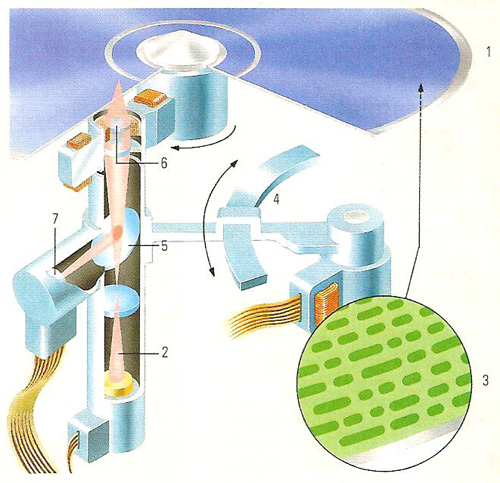compact disk

A compact disk is a disk used for high-quality digital sound reproduction. It is a plastic disk with a shiny metal layer and a transparent protective plastic coating. The sound signal consists of millions of minute pits, pressed into one side of the metal. On replay, a tiny laser beam is reflected from the rotating disk's surface. A sensor detects changes in the beam, and forms an electrical signal of pulses. This is processed and decoded to form an analog sound signal that can be amplified for reproduction on loudspeakers.
Referring to the diagram, a compact disk player reads information from a compact disk (1) using a focused laser (2). Music or other information is written on the underside of the disk in a spiral track of pits (3), representing a digital code of zeros and ones. The disk spins and the laser, mounted on a swing arm (4), moves as the disk plays. The laser passes through a semi-silvered mirror (5) and is focused on the disk (6). When the laser hits a flat area it is reflected back via the mirror to a sensor (7) and the information sent to a chip. When the laser hits a pit, it is scattered.


